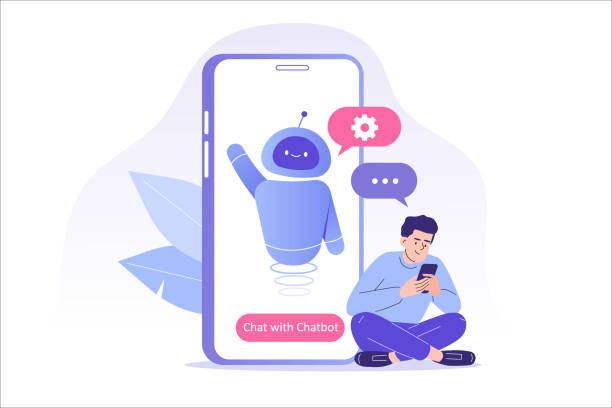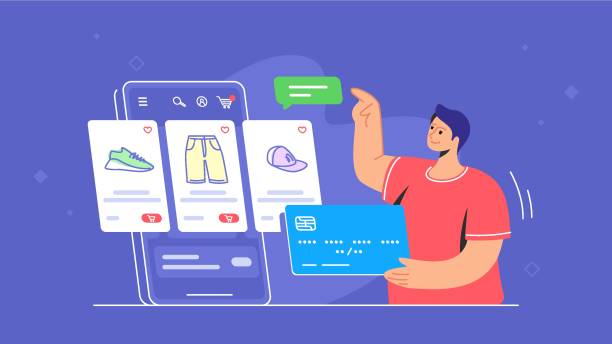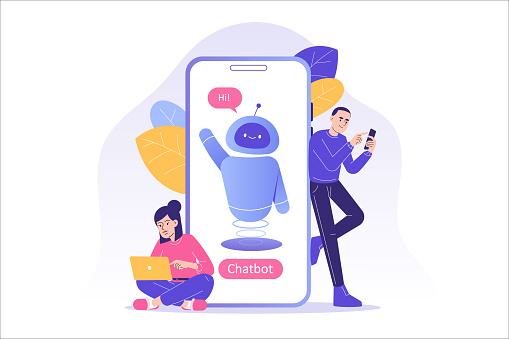Chatbots have become increasingly popular in recent years, transforming the way businesses interact with customers and handle inquiries.
But what exactly are chatbots?
Simply put, chatbots are computer programs designed to simulate conversation with human users, typically through messaging applications or websites.
Chatbots can be programmed to perform a variety of tasks, including answering frequently asked questions, providing product recommendations, and even processing orders.
They can be integrated into a variety of platforms, including social media, messaging apps, and websites, making them a versatile tool for businesses looking to improve customer engagement and support.
One of the critical benefits of chatbots is their ability to provide instant support to customers. Rather than waiting on hold or sending an email and waiting for a response, customers can get immediate answers to their questions through a chatbot.
This can lead to increased customer satisfaction and loyalty, as well as higher conversion rates for businesses.
Chatbots can also be used to collect valuable customer feedback and data. By analyzing conversations with customers, businesses can gain insights into customer preferences, pain points, and buying behavior, which can inform product development and marketing strategies.
In addition, chatbots can be programmed to provide personalized recommendations and offers to customers based on their individual preferences and browsing history. This can lead to increased sales and customer retention, as customers feel more connected and valued by the business.
Overall, chatbots are a powerful tool for businesses looking to improve customer engagement and support, increase conversions, and collect valuable feedback and data.
As technology continues to evolve, chatbots will likely become an even more integral part of the e-commerce and customer support landscape.
Types of chatbots

Chatbots are a rapidly growing technology that has revolutionized the way businesses communicate with their customers.
These bots use artificial intelligence to simulate human conversations, allowing businesses to provide 24/7 customer support and personalized interactions.
Chatbots are used in a variety of industries, including e-commerce, customer support, and home services. There are several different types of chatbots, each with their strengths and weaknesses.
1. Rule-Based Chatbots
Rule-based chatbots are the most basic type of chatbot. They use a set of predetermined rules to respond to customer inquiries.
These bots are limited in their capabilities and can only respond to specific questions or commands. Rule-based chatbots are ideal for simple tasks, such as answering frequently asked questions or providing basic information.
2. AI-Powered Chatbots
AI-powered chatbots use machine learning and natural language processing to understand customer inquiries and provide personalized responses. These bots are capable of learning from previous interactions and improving their responses over time. AI-powered chatbots are ideal for complex tasks, such as providing product recommendations or troubleshooting technical issues.
3. Voice-Activated Chatbots
Voice-activated chatbots use voice recognition technology to understand customer inquiries and respond with natural language. These bots are typically used in home services, such as smart home automation or virtual assistants. Voice-activated chatbots are ideal for hands-free interactions and can be used to control various devices or services.
4. Hybrid Chatbots
Hybrid chatbots combine the capabilities of rule-based and AI-powered chatbots. These bots use a set of predetermined rules to handle simple tasks, but can also learn from previous interactions and provide personalized responses. Hybrid chatbots are ideal for businesses that want to provide personalized customer support while still maintaining control over the conversation.
5. Social Media Chatbots
Social media chatbots are used to interact with customers on social media platforms, such as Facebook or Twitter. These bots can be programmed to respond to specific keywords or hashtags or to provide automated responses to common inquiries. Social media chatbots are ideal for businesses that want to engage with customers on social media without dedicating a lot of resources to social media management.
In conclusion, chatbots are an incredibly versatile technology that can be used in a variety of industries to improve customer engagement and increase conversions. By understanding the different types of chatbots available, businesses can choose the best option for their specific needs and provide exceptional customer support.
Advantages of using chatbots in e-commerce and customer support
Chatbots have become a game-changer for e-commerce businesses and customer support services. They have been incorporated into business strategies to improve customer experience, increase engagement, and drive sales. The use of chatbots in e-commerce and customer support has several advantages, some of which are discussed below.
24/7 Availability

Chatbots offer round-the-clock availability to customers, which is crucial in the e-commerce industry. Customers can access information, make inquiries, and place orders at any time of the day or night. This is particularly useful for businesses with a global customer base, where customers may be in different time zones.
Efficient Customer Service

Chatbots can handle numerous customer queries simultaneously, which can significantly improve customer service efficiency. They can also provide quick responses to frequently asked questions, and customers can get instant feedback without waiting for a human agent. This ensures that customers are satisfied and their needs are met promptly.
Personalization

Chatbots can collect customer data and use it to personalize customer interactions. This can include recommending products based on a customer’s previous purchases or browsing history. Personalization has been proven to increase customer loyalty and drive sales.
Cost Savings

Using chatbots can significantly reduce business costs. Instead of employing a large customer service team, chatbots can handle many of the inquiries and tasks that would typically require human intervention. This can save businesses time and money, allowing them to focus on other areas of their operations.
Increased Sales

Chatbots can help businesses increase sales by guiding customers through the buying process. They can recommend products, provide product information, and assist with the checkout process. Chatbots can also provide personalized product recommendations based on a customer’s preferences.
Understanding the Benefits of Chatbots

Improving user engagement with chatbots
Chatbots have revolutionized the way businesses interact with their customers. With the advancements in AI and machine learning, chatbots have become an indispensable tool for Ecommerce, marketing, customer support, and home service industries.
One of the most significant advantages of chatbots is their ability to improve user engagement and conversions. Chatbots can help businesses engage with their customers in a personalized and interactive way, which is essential for building long-term relationships and increasing sales.
Here are some ways chatbots can improve user engagement
- 24/7 Availability: Chatbots are available 24/7, which means they can engage with customers at any time. This is particularly useful for businesses with a global customer base, as chatbots can provide instant support regardless of time zones.
- Personalization: Chatbots can personalize conversations based on a user’s preferences, browsing history, and purchase behavior. This makes the interaction more relevant and engaging, leading to higher conversions.
- Quick Response: Chatbots can provide quick responses to customer queries, which is essential for improving user engagement. Studies show that customers are more likely to engage with businesses that provide quick responses.
- Interactive Conversations: Chatbots can engage customers in interactive conversations, which is more engaging than static web pages. By providing recommendations, answering questions, and offering personalized deals, chatbots can keep users engaged and interested.
- Feedback and Surveys: Chatbots can also be used to collect feedback and conduct surveys. This can help businesses understand customer preferences and improve their products and services accordingly.
Boosting Conversions with Chatbots
Chatbots have emerged as a powerful tool in the e-commerce industry, transforming the way businesses interact with customers and prospects.
As a result, chatbots have become an integral part of online marketing strategies, helping businesses to boost user engagement, increase conversions and drive sales.
1. Personalization
Chatbots can provide a personalized experience for customers, tailoring responses to their specific needs and preferences. By using data such as purchase history and browsing behavior, chatbots can offer personalized recommendations and product suggestions, leading to higher click-through rates and conversions.
2. 24/7 Availability
Chatbots are available round the clock, providing customers with instant support and assistance. This not only improves customer satisfaction but also leads to higher conversions as customers are more likely to make a purchase when they receive immediate support and guidance.
3. Lead Generation
Chatbots can be used to generate leads by engaging with visitors and collecting contact information. They can also ask qualifying questions to determine the prospect’s needs and preferences, enabling businesses to offer targeted solutions and increase the chances of conversion.
4. Customer Support
Chatbots can provide quick and efficient customer support, resolving queries and issues in real time. This not only improves customer satisfaction but also leads to higher conversions as customers are more likely to make a purchase when they receive good customer support.
5. Upselling and Cross-Selling
Chatbots can be used to upsell and cross-sell products, increasing the average order value. By suggesting related products or complementary items, chatbots can encourage customers to make additional purchases, leading to higher conversions.
Reducing customer service response time with chatbots
One of the key benefits of chatbots is their ability to reduce response time for customer service inquiries. In traditional customer support, customers often have to wait for long periods on hold for a response to their email or support ticket.
This can lead to frustration and dissatisfaction with the company’s customer service. Chatbots can help solve this problem by providing instant responses to customer inquiries.
Chatbots can handle a wide range of customer inquiries, from simple questions about product availability to more complex issues like returns and refunds.
By automating these inquiries, chatbots can free up customer service representatives to focus on more complex issues that require human interaction.
Chatbots can also provide 24/7 customer support, ensuring that customers can get the help they need at any time of the day or night. This can be particularly important for e-commerce businesses that have customers in different time zones.
Another advantage of chatbots is that they can provide personalized responses to customer inquiries. By analyzing customer data, chatbots can provide tailored responses that address the specific needs and preferences of each customer. This can help improve customer satisfaction and loyalty.
In addition to reducing response time, chatbots can also help businesses save money on customer support. By automating routine inquiries, companies can reduce the number of customer service representatives needed to handle customer inquiries. This can result in significant cost savings over time.
Overall, chatbots can be a powerful tool for reducing customer service response time and improving customer satisfaction. By automating routine inquiries and providing personalized responses, chatbots can help businesses provide fast, efficient, and effective customer support.
Enhancing customer experience with chatbots
Chatbots have revolutionized the way businesses interact with their customers. They are fast becoming an essential tool for enhancing customer experience and boosting sales. In the fast-paced world of e-commerce, chatbots have become a necessity for businesses looking to get more leads, more sales, and improve customer support.
Chatbots are AI-powered digital assistants that can interact with customers and respond to their queries in real time. They can be integrated into messaging apps, websites, and social media platforms. With chatbots, businesses can automate their customer support, offer personalized recommendations, and provide a seamless shopping experience.
One of the biggest advantages of chatbots is their ability to increase user engagement. Chatbots can engage customers in a conversation, offer product recommendations, and provide support, all naturally and conversationally. This helps to build trust and loyalty, which can lead to increased sales and repeat customers.
Chatbots can also significantly increase conversions. By offering personalized recommendations based on a customer’s browsing history and preferences, chatbots can help customers find products that meet their needs. This can lead to higher conversion rates and increased revenue for businesses.
In addition to increasing engagement and conversions, chatbots can also improve customer support. Chatbots can handle routine queries, freeing up customer support staff to handle more complex issues. They can also provide 24/7 support, ensuring that customers can get help whenever they need it.
For businesses in the home service niche, chatbots can be particularly useful. They can help customers book appointments, get quotes, and find information about services. This can help to streamline the booking process and improve customer satisfaction.
How Chatbots are Changing Ecommerce

Chatbots in e-commerce: The current scenario
Chatbots have been around for a while now, but they are rapidly gaining popularity in e-commerce. The reason for this is simple – chatbots have the potential to significantly increase user engagement and conversions.
Customer support
- One of the key areas where chatbots are being used in e-commerce is customer support.
- Chatbots can handle a wide range of customer queries, from simple FAQs to complex product-related questions.
- They can do this faster and more efficiently than human agents, which can lead to faster resolution times and happier customers.
- Chatbots can also be programmed to provide personalized recommendations based on a customer’s browsing and purchase history, which can help drive sales and improve the overall user experience.
Sales
- Chatbots can also be used to drive sales in e-commerce.
- They can engage customers in real-time conversations, answer questions, and provide personalized recommendations, all of which can help increase conversions.
- Chatbots can also be programmed to upsell and cross-sell products, which can lead to higher average order values.
- By providing a seamless and personalized shopping experience, chatbots can help e-commerce businesses stand out from the competition and win more customers.
User experience
- Batbots can also be used to enhance the overall user experience in e-commerce.
By providing instant and personalized support, chatbots can help reduce friction and frustration for customers.
They can also help customers find the products they are looking for faster and more easily, which can lead to higher levels of engagement and satisfaction.
Chatbots can even be used to provide proactive support, such as sending reminders about abandoned carts or upcoming sales.
Benefits of using chatbots in e-commerce
Chatbots have revolutionized the way businesses connect with their customers. In the e-commerce industry, chatbots have become an essential tool for improving customer engagement, increasing conversions, and providing seamless customer support.
Here are some of the benefits of using chatbots in e-commerce:
24/7 Availability
One of the most significant advantages of chatbots is that they are available 24/7. Customers can get instant assistance with their queries, even outside business hours. This ensures that businesses can provide a seamless customer experience and cater to their customer’s needs at any time.
Personalized Customer Experience
Chatbots can personalize the customer experience by providing tailored recommendations and offers based on the customer’s browsing and purchase history. This level of personalization helps businesses increase customer loyalty and drive more sales.
Increased Efficiency
- Chatbots can handle multiple customer queries simultaneously, reducing the need for customer support staff. This not only saves businesses time and money but also ensures that customer queries are answered promptly.
Higher Customer Engagement
- Chatbots can conversationally engage customers, making the shopping experience more interactive and enjoyable. This level of engagement helps businesses build stronger relationships with customers and establish their brand as customer-friendly.
Improved Conversion Rates
Chatbots can guide customers through the purchase process, answer their queries, and provide personalized recommendations. This level of assistance helps reduce cart abandonment rates and increases the chances of conversion.
Cost-Effective Customer Support
Chatbots provide cost-effective customer support by reducing the need for human customer support staff. Businesses can save money on staffing costs while ensuring that customer queries are handled efficiently.
Types of chatbots used in e-commerce
Chatbots have become a popular tool in e-commerce, providing businesses with an effective way to communicate with customers and boost sales.
There are different types of chatbots that businesses can use to improve user engagement and conversions in e-commerce.
1. Rule-based chatbots
These chatbots are programmed with a set of rules that determine how they respond to user queries. Rule-based chatbots are ideal for handling simple, straightforward questions and can provide customers with quick responses.
2. AI-powered chatbots
These chatbots use machine learning algorithms to understand customer queries and provide personalized responses. AI-powered chatbots can learn from customer interactions and improve their responses over time, making them ideal for handling complex queries.
3. Voice-powered chatbots
These chatbots are designed to interact with customers using voice commands. Voice-powered chatbots can be integrated with smart speakers like Amazon Echo and Google Home, providing customers with hands-free access to e-commerce services.
4. Hybrid chatbots
These chatbots combine the capabilities of rule-based and AI-powered chatbots. Hybrid chatbots can handle simple queries using pre-defined rules and switch to AI-powered responses for more complex queries.
5. Transactional chatbots
These chatbots are designed to handle transactions, such as processing orders and making payments. Transactional chatbots can provide customers with a seamless shopping experience by eliminating the need to navigate through complex checkout processes.
By using chatbots, e-commerce businesses can significantly improve user engagement and conversions. Chatbots can provide customers with quick and personalized responses, reducing the time taken to make a purchase.
Additionally, chatbots can help businesses gather customer feedback, providing insights that can be used to improve products and services. Overall, chatbots are a valuable tool for businesses looking to enhance their customer support and increase sales.
Case studies of successful implementation of chatbots in e-commerce
The rise of chatbots in the e-commerce industry has been nothing short of remarkable. In recent years, chatbots have transformed the way businesses interact with their customers, providing personalized and conversational experiences that result in increased engagement and higher conversion rates. In this subchapter, we will take a closer look at some of the most successful implementations of chatbots in e-commerce and the key takeaways from each case study.
1. H&M
H&M, the Swedish fashion giant, was one of the first companies to embrace chatbots in the fashion industry. The H&M chatbot, available on the company’s website and Facebook Messenger, offers personalized recommendations to customers based on their preferences and buying history. The chatbot also helps customers find the perfect outfit for any occasion and provides real-time updates on the latest fashion trends.
Key takeaway: Personalization is key to successful chatbot implementation in e-commerce.
2. 1-800-Flowers
1-800-Flowers, a leading online florist, has successfully implemented a chatbot on Facebook Messenger that allows customers to easily order flowers and gifts for any occasion. The chatbot also provides personalized recommendations based on the recipient’s preferences and the occasion. Customers can track their order status in real time and receive delivery updates via the chatbot.
Key takeaway: Chatbots can simplify the purchase process and provide real-time updates to customers, resulting in increased customer satisfaction.
3. Sephora
Sephora, the beauty retailer, has implemented a chatbot on Kik that provides personalized beauty recommendations to customers. The chatbot uses artificial intelligence to understand the customer’s preferences and suggest products based on their skin type, style, and beauty goals. Customers can also book appointments with Sephora’s beauty experts via the chatbot.
Key takeaway: Chatbots can be used to offer personalized product recommendations and connect customers with experts, resulting in increased customer loyalty.
How Chatbots are Revolutionizing Customer Support

Chatbots in customer support: The current scenario
In the world of e-commerce, customer support is vital for the success of any business. Happy customers mean more sales and increased revenue.
However, providing quality customer support can be time-consuming and expensive. That’s where chatbots come in. Chatbots are computer programs that simulate conversations with human users. They can be used to automate customer support and provide 24/7 assistance to customers.
The current scenario of chatbots in customer support is promising. According to a recent survey, 80% of businesses plan to use chatbots by 2020. The rise of chatbots can be attributed to several factors. Firstly, chatbots are cost-effective.
They can handle multiple customer queries simultaneously, reducing the need for human support agents. Secondly, chatbots can provide instant support. Customers don’t have to wait for hours or days for a response. Thirdly, chatbots can improve customer satisfaction. They can provide personalized recommendations and solutions, leading to higher customer engagement and conversions.
Chatbots are also becoming more sophisticated. They are incorporating artificial intelligence (AI) and natural language processing (NLP) to provide more human-like interactions.
For example, chatbots can now understand complex queries and respond with relevant information. They can also learn from customer interactions and improve their responses over time.
One of the biggest advantages of chatbots in customer support is their ability to handle repetitive tasks. For example, they can answer frequently asked questions, process orders, and provide shipping information. This frees up human support agents to handle more complex queries and provide personalized assistance.
Chatbots are also being used in other niches such as home services and web design. For example, a chatbot can be used to schedule appointments and provide quotes for home services. In web design, a chatbot can assist customers with website design and development queries.
Benefits of using chatbots in customer support
One of the most significant benefits of using chatbots in customer support is their ability to provide instant responses to customer inquiries. With traditional customer support channels, such as email or phone, customers may have to wait for several hours or even days to receive a response.
This delay can be frustrating for customers, leading to a negative experience with the brand and potentially causing them to take their business elsewhere.
Chatbots, on the other hand, are available 24/7 and can provide instant responses to customer inquiries. This not only improves the customer experience but also increases customer satisfaction and loyalty.
Another benefit of using chatbots in customer support is their ability to handle a large volume of inquiries simultaneously.
This can be particularly useful for e-commerce businesses that receive a high volume of customer inquiries during peak periods. Chatbots can handle multiple inquiries at once, reducing the need for additional customer support staff and saving the business time and money.
Chatbots are also effective at reducing customer wait times. With traditional customer support channels, customers may have to wait on hold for extended periods before speaking with a representative. This can be frustrating for customers and lead to a negative experience with the brand.
Chatbots can provide instant responses, eliminating the need for customers to wait on hold and improving their overall experience with the brand.
Finally, chatbots can significantly increase user engagement and conversions. By providing instant responses to customer inquiries and offering personalized recommendations, chatbots can help customers find the products or services they are looking for, increasing the likelihood of a sale.
Additionally, chatbots can provide proactive customer support, reaching out to customers with personalized offers and recommendations based on their browsing and purchase history.
Types of chatbots used in customer support
Chatbots have become a popular tool for businesses to enhance their customer support experience. They are AI-powered virtual assistants that can converse with customers and provide quick and efficient solutions to their problems. There are different types of chatbots used in customer support, and each has its unique capabilities and features.
Here are some of the most common types of chatbots used in customer support:
Rule-based chatbots
- These are the most basic type of chatbots that work on predefined rules and commands. They can answer simple customer queries and provide relevant information based on keywords and phrases. Rule-based chatbots are easy to set up and require minimal maintenance.
AI-powered chatbots
- These chatbots use machine learning algorithms to understand and interpret customer queries. They can provide more personalized and accurate responses based on the context and intent of the conversation. AI-powered chatbots can also learn from previous interactions to improve their performance over time.
Voice-enabled chatbots
- These chatbots use voice recognition technology to interact with customers. They can understand natural language and provide a more conversational experience. Voice-enabled chatbots are particularly useful for hands-free interactions, such as driving or cooking.
Hybrid chatbots
These chatbots combine the capabilities of rule-based and AI-powered chatbots. They can handle both simple and complex customer queries and provide a more seamless customer support experience. Hybrid chatbots can also switch between different modes of communication, such as text and voice, depending on the customer’s preference.
Social media chatbots
These chatbots are designed to interact with customers on social media platforms such as Facebook, Twitter, and Instagram. They can handle customer queries, provide product recommendations, and even facilitate transactions. Social media chatbots are particularly useful for businesses that have a strong social media presence.
In conclusion, chatbots have become an essential tool for businesses to enhance their customer support experience. There are different types of chatbots available, each with its unique capabilities and features. Choosing the right chatbot for their business, e-commerce, marketing, feedback and customer support, web design, and home service businesses can significantly increase user engagement and conversions.
Implementing Chatbots in Your Business

Choosing the Right Chatbot for Your Business
The chatbot revolution is well underway, and businesses are quickly realizing the benefits of incorporating chatbots into their customer support and e-commerce strategies.
However, with so many different chatbot options available, it can be difficult to determine which one is the right fit for your business.
Here are some important factors to consider when choosing the right chatbot for your business:
1. Purpose and Goals
Before you can choose the right chatbot for your business, you need to clearly define your purpose and goals. Are you looking to improve customer support? Increase sales? Improve user engagement? Once you have a clear understanding of your goals, you can determine which chatbot features will best help you achieve them.
2. User Interface
The user interface of your chatbot is crucial for ensuring a positive user experience. Make sure your chatbot is easy to use and navigate, and that it provides the necessary information and support your users need.
3. Integration
Your chatbot should seamlessly integrate with your existing systems, including your website, e-commerce platform, and customer support software. Make sure your chatbot can easily connect with these systems to provide a seamless user experience.
4. Customization
Every business is unique, and your chatbot should be customizable to fit your specific needs. Look for a chatbot platform that allows you to personalize your chatbot’s responses, design, and functionality.
5. Analytics and Reporting
To measure the success of your chatbot, you need access to analytics and reporting tools. Look for a chatbot platform that provides detailed insights into your chatbot’s performance, including user engagement, conversions, and customer satisfaction.
By considering these factors, you can choose the right chatbot for your business and take advantage of the many benefits of chatbot technology, including increased user engagement, improved customer support, and higher conversions.
Chatbot design and development
Chatbots are becoming increasingly popular in the world of e-commerce and customer support. They have the potential to significantly increase user engagement and conversions, making them an essential tool for any business looking to improve their online presence.
Designing and developing a chatbot requires careful planning and consideration. There are several key factors to keep in mind when creating a chatbot that is both effective and user-friendly.
First and foremost, it is important to determine the purpose of the chatbot. What specific tasks or functions will it perform? Will it be used primarily for customer service, sales, or marketing? Once the purpose has been established, it is easier to determine the necessary features and design elements.
Next, the chatbot’s personality and tone of voice should be developed. This is essential to ensure that the chatbot is engaging and relatable to users. It should be designed to speak in a natural and conversational tone, rather than sounding robotic or scripted.
Once the chatbot’s purpose and personality have been established, it is time to start developing the actual chatbot. This involves creating a flowchart or decision tree that outlines the different paths a conversation can take, based on the user’s responses. It is important to keep the conversation as simple as possible, while still providing users with the information or assistance they need.
The chatbot should also be designed to be easily accessible and user-friendly. This means ensuring that it is compatible with a variety of devices and platforms and that it is easy to navigate and use.
Chatbot integration with your website and social media platforms
Chatbots have become one of the most popular ways to improve customer engagement and conversion rates. With the help of AI technology, chatbots can provide quick and efficient responses to customer queries, automate customer support, and even help with sales. In this subchapter, we will explore how chatbot integration can benefit your website and social media platforms, and how it can significantly increase user engagement and conversions.
Website Integration
Integrating chatbots into your website can provide a more personalized experience for your customers. They can answer frequently asked questions, provide product recommendations, and even help customers complete purchases. By having a chatbot on your website, you can ensure that your customers have access to 24/7 support, which can lead to increased customer satisfaction and loyalty.
Social Media Integration
In addition to website integration, chatbots can also be integrated into your social media platforms. This can help with customer engagement by providing quick and efficient responses to customer queries. Chatbots can also provide personalized recommendations and promotions, which can lead to increased sales. Additionally, chatbots can help with lead generation by collecting customer information and providing relevant content.
Benefits of Chatbot Integration
One of the most significant benefits of chatbot integration is the ability to provide 24/7 support to your customers. By having a chatbot on your website and social media platforms, you can ensure that your customers always have access to support, which can lead to increased customer satisfaction and loyalty. Additionally, chatbots can help with lead generation by collecting customer information and providing relevant content. Chatbots can also help with sales by providing personalized recommendations and promotions.
Managing and monitoring chatbot performance
Managing and monitoring chatbot performance is crucial to the success of any e-commerce or customer support strategy. Chatbots can significantly increase user engagement and conversions, but only if they are designed and implemented properly. In this subchapter, we will explore the best practices for managing and monitoring chatbot performance to ensure that your bot is delivering the best possible experience for your customers.
First and foremost, it is important to establish clear goals for your chatbot. What do you want your chatbot to achieve? Is it to increase sales? Provide customer support? Generate leads? Once you have established your goals, you can begin to measure your chatbot’s performance against them. This will help you identify areas that need improvement and make data-driven decisions about how to optimize your bot.
One key metric to monitor is the chatbot’s response time. Users expect chatbots to provide quick and accurate responses to their inquiries. If your chatbot is taking too long to respond, users may become frustrated and abandon the conversation. It is important to regularly monitor and optimize your chatbot’s response time to ensure that it is meeting user expectations.
Another important metric to monitor is user satisfaction. Are users finding your chatbot helpful and effective? Are they leaving positive feedback? If not, it may be time to revisit your chatbot’s design and functionality. Consider conducting user surveys or focus groups to gather feedback and make improvements.
It is also important to regularly update and maintain your chatbot. As your business evolves, your chatbot should evolve with it. This may mean adding new features, updating responses, or fine-tuning the bot’s behavior. Regular maintenance will ensure that your chatbot remains relevant and effective.
Challenges and Limitations of Chatbots
Common challenges faced while using chatbots
Chatbots are rapidly becoming the go-to solution for businesses looking to improve customer engagement and conversion rates.
These AI-powered tools can help companies deliver personalized and timely messages to their customers, leading to better customer experiences and, ultimately, more sales. However, while chatbots offer many benefits, they also come with their own set of challenges.
One of the most common challenges faced when using chatbots is ensuring that they are properly programmed and set up. This is especially true for businesses that are new to chatbot technology and may not have the technical expertise required to create and maintain their chatbots.
In such cases, it is important to work with a reputable chatbot provider who can help set up and manage the chatbot for you.
Another challenge that businesses face with chatbots is ensuring that they are fully integrated with the rest of their customer support and marketing systems. Chatbots need to be able to access customer data and respond to queries in a way that is consistent with the overall brand messaging. This requires careful planning and coordination between different teams within the organization.
A third challenge is ensuring that chatbots can effectively handle complex customer queries and complaints. While chatbots are great for handling routine tasks and simple queries, they may struggle with more complex issues that require human intervention.
Finally, businesses need to be mindful of the potential for chatbots to be misused or abused by customers. Chatbots can be programmed to respond in a certain way to certain keywords or phrases, but this can also make them vulnerable to abuse.
For example, a customer may use inappropriate language or try to game the system to get a certain response from the chatbot. Businesses need to have clear guidelines in place for dealing with such situations and should monitor chatbot interactions to identify any potential issues.
Limitations of chatbots in e-commerce and customer support
Chatbots have transformed the way we interact with technology, but they are not without limitations. As e-commerce and customer support have become more reliant on chatbots, it is important to understand the limitations of this technology.
One of the main limitations of chatbots is their inability to understand complex customer inquiries. Chatbots rely on keywords and pre-determined responses to assist. This means that if a customer asks a question that is not within the chatbot’s scope, it may not be able to provide a satisfactory answer. Additionally, chatbots may not be able to understand the nuances of human language, leading to miscommunication and frustration.
Another limitation of chatbots is their lack of empathy and emotional intelligence. Customers may feel frustrated or upset when they encounter an issue with their purchase, and a chatbot’s responses may not provide the emotional support that they need. This can lead to a negative experience for the customer and ultimately result in lost sales.
Chatbots also struggle with handling multiple inquiries at once. While they are designed to be efficient and provide quick responses, they may not be able to handle a high volume of inquiries simultaneously. This can lead to longer wait times for customers and may result in lost sales or negative reviews.
Finally, chatbots are not a replacement for human customer support. While they can assist with simple inquiries and provide basic support, they cannot replace the human touch that customers often seek when interacting with a brand. Customers may appreciate the convenience of chatbots, but they still value the personal touch that a human representative can provide.
Overcoming the challenges and limitations of chatbots
Chatbots have become an integral part of the online customer experience. They have the potential to revolutionize the way businesses interact with their customers, but they also come with a unique set of challenges and limitations.
One of the main challenges of chatbots is their inability to understand complex queries and requests. While they are capable of handling simple tasks and providing basic information, they often struggle with more complicated requests. This can be frustrating for customers who expect prompt and accurate responses from chatbots.
Another challenge of chatbots is their lack of emotional intelligence. They are programmed to provide scripted responses and cannot empathize with customers in the same way that humans can. This can make the customer experience feel impersonal and robotic, which can negatively impact user engagement and conversions.
To overcome these challenges and limitations, businesses need to take a strategic approach to chatbot implementation. They must carefully consider the types of queries and requests that their customers are likely to make and ensure that their chatbots are equipped to handle them. This may involve investing in more advanced chatbot technology or training employees to handle more complex queries.
Businesses must also work to make their chatbots more human-like in their interactions with customers. This can be achieved by programming chatbots to respond to emotional cues and using natural language processing to make their responses feel more conversational. By creating a more personalized and engaging customer experience, businesses can increase user engagement and conversions.
Future of Chatbots in Ecommerce and Customer Support
Emerging trends in chatbot technology
The chatbot technology has been around for quite some time now, yet it is still evolving at an unprecedented rate. Over the years, chatbots have become more sophisticated and intelligent, thanks to the advancements in AI.
Here are some of the top trends to watch out for:
1. Conversational AI
Conversational AI is the next big thing in chatbot technology. It uses natural language processing (NLP) to understand and respond to customer queries in a more human-like manner. With conversational AI, chatbots can hold more advanced and contextually relevant conversations with customers, leading to better engagement and conversions.
2. Omnichannel Support
Today’s customers are using multiple channels to interact with brands, including social media, email, chat, and phone. Chatbots are now evolving to provide omnichannel support, allowing customers to engage with brands across all channels seamlessly. This trend is set to enhance customer experience and increase brand loyalty.
3. Personalization
Personalization is the key to unlocking better customer engagement and conversions. Chatbots are now using data analytics to understand customer behavior and preferences, enabling them to offer personalized recommendations and promotions. This trend is set to become more prevalent in 2021 as brands strive to deliver personalized experiences to their customers.
4. Voice-Enabled Chatbots
Voice-enabled chatbots are another emerging trend in chatbot technology. With the rise of virtual assistants such as Alexa and Google Assistant, customers are becoming more comfortable with voice interactions. Voice-enabled chatbots will enable customers to interact with brands through voice commands, making the experience more natural and intuitive.
The potential impact of chatbots on e-commerce and customer support
Chatbots are revolutionizing the e-commerce industry by transforming the way businesses interact with their customers. These AI-powered bots are capable of handling customer queries, providing personalized recommendations, and even completing transactions seamlessly. With the potential to improve customer experiences and increase sales, chatbots are rapidly becoming a must-have tool for e-commerce businesses.
One of the most significant impacts of chatbots on e-commerce is their ability to increase user engagement. By providing personalized product recommendations and offering tailored promotions, chatbots can entice customers to interact more with a brand. Additionally, chatbots can also provide a seamless shopping experience by guiding customers through the entire buying process, from product search to payment.
Chatbots can also help increase conversions by providing real-time customer support. Customers can receive immediate responses to their queries, eliminating the need for long waiting times on hold or waiting for email responses. This instant support can help customers make purchasing decisions quickly, leading to higher conversion rates.
Another significant impact of chatbots on e-commerce is their ability to provide valuable feedback. Chatbots can collect customer data and feedback, which can be used to improve products and services. This information can also be used to identify trends and patterns, allowing businesses to make data-driven decisions that can improve customer satisfaction and increase sales.
Chatbots can also be used to improve customer support services. By providing 24/7 support, chatbots can help businesses provide a more efficient and convenient customer experience. This can lead to higher customer satisfaction rates and an increase in customer loyalty.
Opportunities for businesses using chatbots
Chatbots are taking the world by storm, and businesses can’t afford to ignore them. These AI-powered bots are transforming the way we interact with customers, and savvy businesses are leveraging them to increase user engagement and conversions.
One of the biggest opportunities for businesses using chatbots is the ability to provide instant support. Customers today demand immediate attention, and chatbots offer 24/7 support that can handle multiple queries at once. This means that businesses can engage with their customers in real time, providing quick and efficient solutions to their problems.
Another opportunity for businesses is the ability to personalize customer experiences. Chatbots can collect data on customer preferences and behavior, allowing businesses to tailor their products and services to individual needs. This personalized approach to customer service can significantly increase user engagement and conversions.
Chatbots can also be used to generate more leads and sales. By integrating chatbots into their website or social media channels, businesses can automate the lead generation process and encourage users to take action. Chatbots can also provide product recommendations and upsell opportunities, increasing the chances of a sale.
For home service businesses, chatbots can be particularly useful. They can be used to schedule appointments, provide quotes, and answer common questions. This means that businesses can reduce the time and effort spent on administrative tasks and focus on providing high-quality services to their customers.
In addition to these opportunities, chatbots can also help businesses gather valuable feedback and insights. By asking customers for feedback after purchase or interaction, businesses can identify areas for improvement and make data-driven decisions that improve user engagement and conversions.
Preparing for the Chatbot Revolution: Best Practices and Tips
The rise of artificial intelligence and machine learning has led to the chatbot revolution. Chatbots are becoming increasingly popular in the ecommerce industry, as they provide customers with a seamless and personalized shopping experience.
Chatbots are also being used in customer support, lead generation, and home services. With the help of chatbots, businesses can get more leads, increase sales, and improve their overall customer satisfaction.
As a business owner, it’s important to prepare for the chatbot revolution. Here are some best practices and tips to help you get started:
1. Define Your Goals
Before implementing chatbots, it’s important to define your goals. What do you want to achieve with chatbots? Are you looking to improve customer support, generate more leads, or increase sales? Defining your goals will help you choose the right chatbot platform and design a chatbot that meets your specific needs.
2. Choose the Right Platform
There are many chatbot platforms available, each with its strengths and weaknesses. Some popular chatbot platforms include Facebook Messenger, WhatsApp, and Slack. It’s important to choose a platform that aligns with your goals and your target audience. For example, if your target audience is primarily on Facebook, then Facebook Messenger would be a good choice.
3. Design a User-Friendly Chatbot
When designing a chatbot, it’s important to keep the user in mind. The chatbot should be easy to use and provide a seamless experience. The chatbot should also be personalized, so it feels like a real conversation. Use conversational language and avoid using too much jargon.
4. Test and Optimize
Once your chatbot is live, it’s important to test and optimize it regularly. Use analytics to track user behavior and make adjustments to improve the user experience. Keep in mind that chatbots are not a one-size-fits-all solution. What works for one business may not work for another. It’s important to continually experiment and optimize to find what works best for your business.
In conclusion, the chatbot revolution is here to stay, and businesses need to prepare for it. By defining your goals, choosing the right platform, designing a user-friendly chatbot, and testing and optimizing regularly, you can take advantage of the benefits that chatbots offer. With chatbots, you can significantly increase user engagement and conversions, leading to more sales and a better customer experience.
Summary of key takeaways
The Chatbot Revolution: How AI is Transforming the Future of E-commerce and Customer Support is an insightful read that highlights the benefits of incorporating chatbots into your business strategy. The article delves into the numerous advantages of using chatbots in your e-commerce store, customer support team, and lead generation efforts.
One of the key takeaways is that chatbot can significantly increase user engagement and conversions. By using a chatbot, you can provide your customers with instant support, answer their questions, and guide them through the purchase process. This not only improves customer satisfaction but also increases the likelihood of a sale.
Chatbots also allow you to gather valuable feedback from your customers in real time. This feedback can be used to improve your products and services, as well as your overall customer experience. By responding promptly to customer concerns and addressing any issues they may have, you can build trust and loyalty with your audience.
Moreover, chatbots can also be used to streamline your lead-generation efforts. By using a chatbot, you can capture leads and nurture them through the sales funnel. This can help you generate more leads and convert more sales, ultimately leading to increased revenue for your business.
Another key takeaway is that chatbots can be used in a variety of industries, from home services to web design. Regardless of your niche, chatbots can help you improve your customer experience and increase your bottom line.
In summary, The Chatbot Revolution: How AI is Transforming the Future of E-commerce and Customer Support is a must-read for anyone looking to improve their business strategy. By incorporating chatbots into your marketing and customer support efforts, you can significantly increase user engagement, conversions, and revenue. So, don’t wait – embrace the chatbot revolution today!
Final thoughts and recommendations
In conclusion, chatbots are revolutionizing the world of e-commerce and customer support. They are the future of customer service and marketing. With the ability to provide personalized, real-time assistance to customers, chatbots have become essential for any business looking to increase user engagement and conversions.
If you’re an e-commerce business owner, integrating chatbots into your marketing and customer service strategy can help you reach new heights of success. By providing personalized, real-time assistance to your customers, you can increase loyalty and keep your customers coming back for more.
If you’re a marketer looking to get more leads and sales, chatbots can help you achieve your goals. By automating your customer service and marketing processes, you can save time and resources while still providing excellent customer service.
If you’re in the home service industry, chatbots can help you provide better customer service and increase customer satisfaction. By automating routine tasks like scheduling appointments and answering common questions, you can focus on delivering high-quality services to your customers.
To achieve maximum results with chatbots, it’s important to keep a few things in mind. First, make sure your chatbot is properly designed and programmed to provide useful, relevant information to your customers. Second, make sure your chatbot is integrated with your existing marketing and customer service channels to ensure a seamless experience for your customers. Finally, make sure you monitor and analyze your chatbot’s performance to identify areas for improvement and optimization.
In conclusion, chatbots are the future of e-commerce and customer support. They offer a powerful tool for reaching new customers, increasing engagement, and driving sales. By integrating chatbots into your marketing and customer service strategy, you can achieve maximum success and stay ahead of the competition.
Call-to-action for businesses looking to implement chatbots.
If you’re a business owner looking to increase user engagement and conversions, then it’s time to jump on the chatbot bandwagon. Chatbots are a powerful tool that can help you improve your customer support, increase sales, and drive more leads to your website.
Here are some call-to-action tips for businesses looking to implement chatbots:
1. Understand Your Customers’ Needs
Before you implement a chatbot, it’s important to understand your customers’ needs. What are their pain points? What do they need help with? What questions do they frequently ask? By understanding your customers’ needs, you can create a chatbot that is tailored to their specific needs and preferences.
2. Choose the Right Platform
There are many chatbot platforms available, and it’s important to choose the right one for your business. Consider factors such as ease of use, customization options, and integrations with other tools that you use.
3. Create a Conversational Experience
When designing your chatbot, it’s important to create a conversational experience. Your chatbot should be friendly, helpful, and easy to use. Avoid using too much jargon or technical language, and keep the conversation flowing naturally.
4. Test and Optimize
Once you’ve implemented your chatbot, it’s important to test and optimize it. Monitor your chatbot’s performance, and make adjustments as needed. This will help you improve the user experience and maximize your results.
5. Promote Your Chatbot
Finally, it’s important to promote your chatbot to your customers and potential customers. Add a chatbot widget to your website, promote it on social media, and include it in your email marketing campaigns. The more people who use your chatbot, the more effective it will be at driving leads and sales.
In conclusion, if you’re looking to increase user engagement and conversions, then it’s time to implement a chatbot. By understanding your customers’ needs, choosing the right platform, creating a conversational experience, testing and optimizing, and promoting your chatbot, you can drive more leads and sales for your business.
Get Life Time Accessibility to Engagerbot Chatbot Software Program.
Our Chatbot Software Program Integrates With Your Advertising and Marketing Automation Service.
Please see our website, Engagerbot, to get more information.

